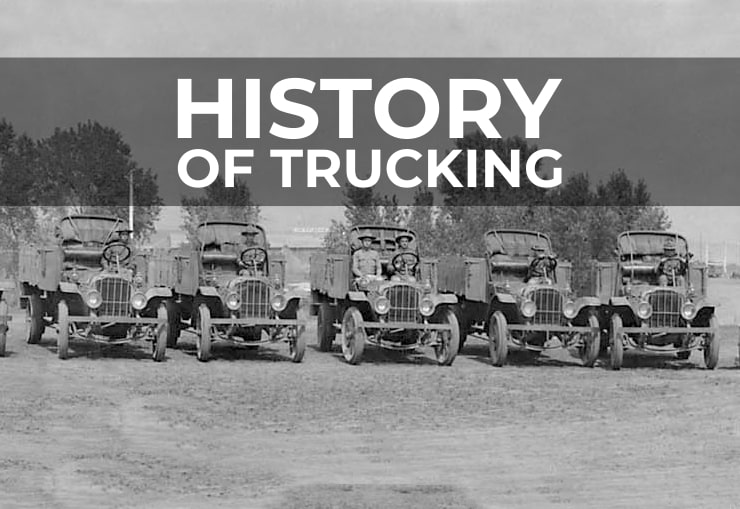The history of trucking in the United States is a fascinating journey that mirrors the nation’s growth and technological progress. From the late 19th century, when the first trucks rolled out to deliver goods, to the present day, where trucking is integral to the economy, the evolution of this industry is a story of innovation, regulation, and adaptation.
Today, trucking is not just a transport mechanism; it’s a lifeline of American commerce, showcasing a rich history intertwined with the growth of the nation itself.
Let’s see the historical events that marked the evolution of trucking in the United States.
- Late 1800s – Early Steam-Powered Wagons
- Early 1900s – The Dawn of Motor Trucks
- 1910s – World War I Influence
- 1920s – The Expansion of Trucking
- 1930s – Great Depression Impact
- 1940s – World War II
- 1950s – Interstate Highway System
- 1960s – Shifts and growth
- 1970s – Trucking’s Golden Era
- 1980s – Deregulation Begins
- 1990s – Technological advancement and regulatory challenges
- 2000s – Ongoing Innovations
- 2010s – Industry diversification and technological advancements
- The 2020s – Continued Technological Growth and Challenges
Late 1800s – Early Steam-Powered Wagons
The very roots of trucking can be traced to the development of steam-powered wagons in the late 19th century. These were among the earliest forms of motorized vehicles used for transportation.
Early Steam-Powered Wagons
The very roots of trucking can be traced to the development of steam-powered wagons in the late 19th century. These were among the earliest forms of motorized vehicles used for transportation
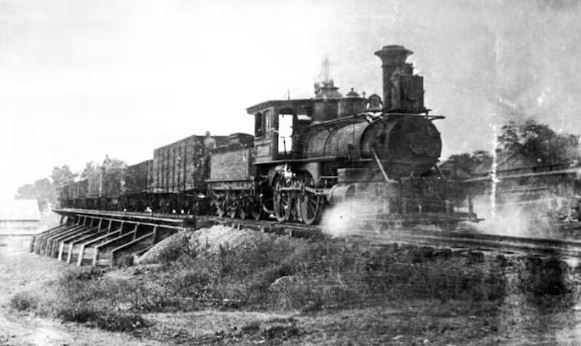
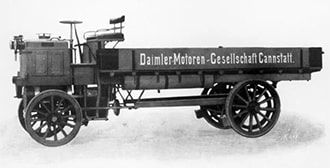
1896 – Gottlieb Daimler’s Motor Truck
German automotive pioneer Gottlieb Daimler built the world’s first truck in 1896. This vehicle was equipped with a 4-horsepower engine and a belt drive with two forward speeds and one reverse.
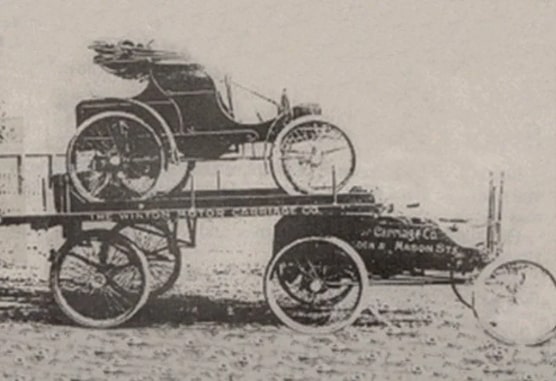
1898 – First Semi-Truck
In 1898, Alexander Winton invented the world’s first semi-truck to transport his manufactured cars without adding mileage. By 1899, he began selling these car haulers, marking the inception of the semi-trailer truck industry.
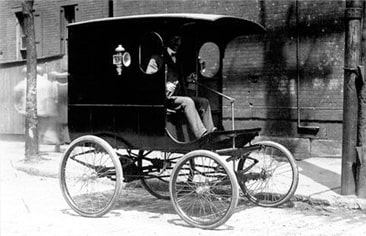
1899 – The first truck commercially available
In 1899, Autocar built and sold the first commercial truck in the United States. This pioneering vocational truck, with a rear-mounted, chain-driven engine, had a 700-pound payload capacity and offered either a 5-horsepower or 8-horsepower motor
Early 1900s – The Dawn of Motor Trucks
The advent of motor trucks began in the early 20th century. These vehicles were initially used for short-haul deliveries. The early 1900s saw various manufacturers experimenting with truck designs. Trucks in this era were often bespoke, made to order for specific purposes.
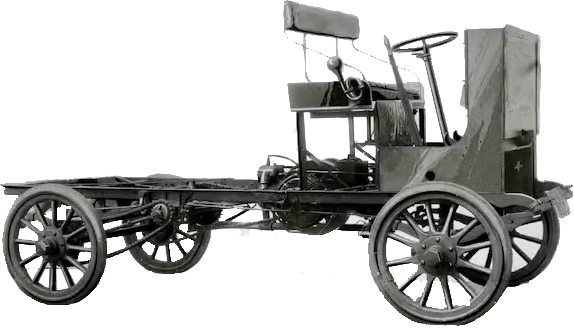
1902 – The first Rapid Motor Vehicle Company truck
In 1902, Max Grabowski invented the Rapid motor truck in Detroit, a one-cylinder, chain-driven vehicle with a right-sided driver’s seat, and sold to a laundry company.
This truck, possibly America’s first motorized truck, laid the groundwork for GMC’s future truck line in Pontiac, Michigan.

1908 – Ford Model T
While not a truck, the introduction of the Ford Model T in 1908 was crucial. It revolutionized the automotive industry, making motor vehicles, including trucks, more accessible and affordable.
1910s – World War I Influence
In the first decade of the 20th century, the trucking industry experienced significant expansion in commercial use.
By 1910, trucks were increasingly being used for commercial purposes, gradually replacing horse-drawn wagons, especially in urban areas where their speed and efficiency were advantageous.
World War I accelerated the development of trucks due to the demand for reliable and efficient transportation of military goods.
The introduction of pneumatic tires for trucks this decade improved the durability and efficiency of trucks, allowing them to travel at higher speeds and with greater loads.
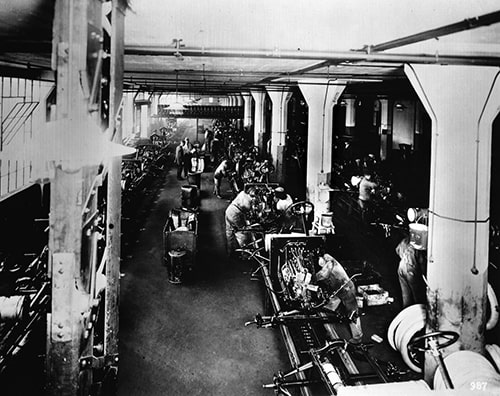
1913 – Assembly Line Impact
The Ford Motor Company revolutionized vehicle manufacturing by introducing the moving assembly line. This innovation significantly lowered the cost of production, making trucks more affordable and accessible.
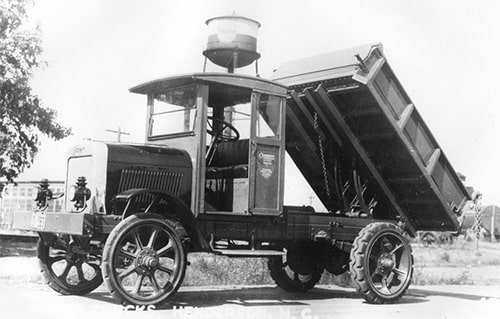
1913 – First weight limits for trucks
In 1913, to prevent road damage caused by heavy trucks with solid rubber or iron wheels, four states—Maine, Massachusetts, Pennsylvania, and Washington – introduced varying truck weight limits, ranging from 18,000 pounds to 28,000 pounds.
It wasn’t until 1981 that a uniform weight limit of 80,000 pounds was adopted nationwide
1914-1918 – World War I
The outbreak of World War I in 1914 had a profound impact on the trucking industry. Trucks proved vital in the war effort for transporting troops and materials. This period saw rapid advancements in truck design and reliability due to the demanding conditions of war.
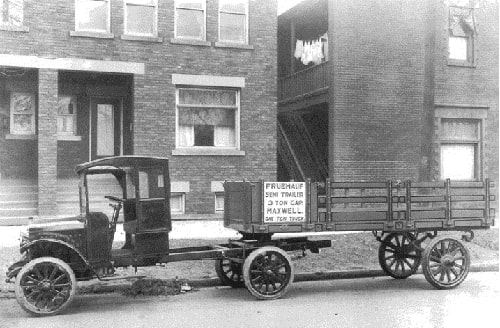
1914 – First articulated assembly of a tractor and semitrailer
In 1914, August Fruehauf, founder of the Fruehauf Trailer Company in Detroit, innovated the semi-trailer to transport a boat with a Ford Model T. His invention spurred the creation of the largest semi-trailer manufacturing company, introducing key technologies like the automatic 5th wheel hitch and the concept for the first refrigerated semi-trailer.
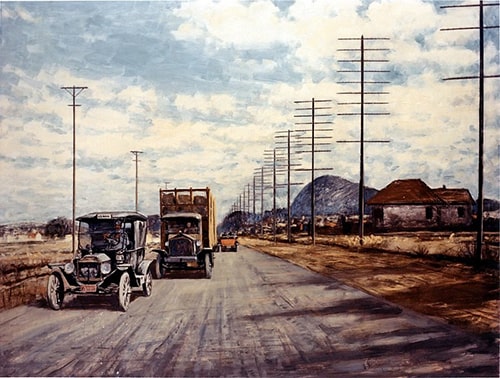
1916 – Federal Aid Road Act
The Federal Aid Road Act of 1916 was a pivotal moment in improving road infrastructure in the U.S. This act provided federal funding for road construction, facilitating better and more extensive trucking routes.
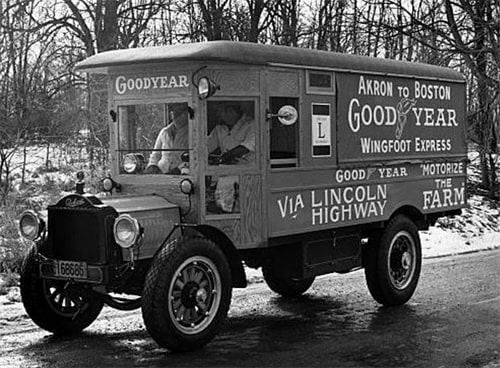
1917 – Goodyear’s Innovation in Trucking
In 1917, Goodyear revolutionized the trucking industry by introducing pneumatic tires for trucks. Failing to find a trucking company to adopt this innovation, Goodyear launched its own service, the Wingfoot Express, connecting Akron to Boston. This marked a significant shift from intercity to interstate trucking, enhancing efficiency and route expansion due to the smoother and faster travel enabled by these tires
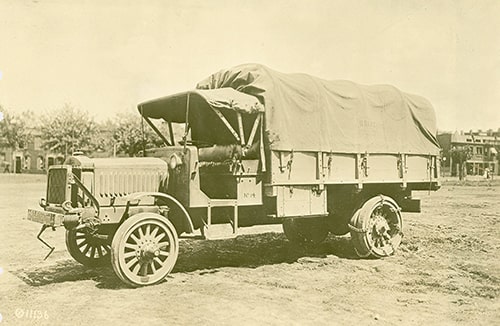
1917 – Standardization of Truck Parts
With the U.S. entry into World War I in 1917, the government began standardizing truck parts to streamline repair and maintenance for military vehicles. This standardization later influenced civilian trucks, improving their reliability and serviceability.
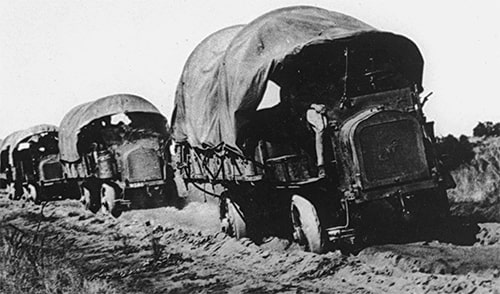
1919 – Motor Transport Corps Convoy
In 1919, the U.S. Army’s Motor Transport Corps convoy traveled across the country from Washington, D.C., to San Francisco. This expedition tested the durability of trucks and highlighted the need for a national highway system.
1920s – The Expansion of Trucking
The 1920s marked a decade of significant growth and development in the trucking industry in the United States.
This period witnessed a considerable expansion in trucking, driven by the proliferation of paved roads, making trucks a viable alternative to railroads for freight transport.
The continued improvement of road infrastructure, along with the increasing reliability and capability of trucks, fueled this rapid growth.
During the early part of the decade, the truck manufacturing sector also saw a surge, with numerous new companies entering the market. This competition spurred rapid technological advancements in truck design and performance.
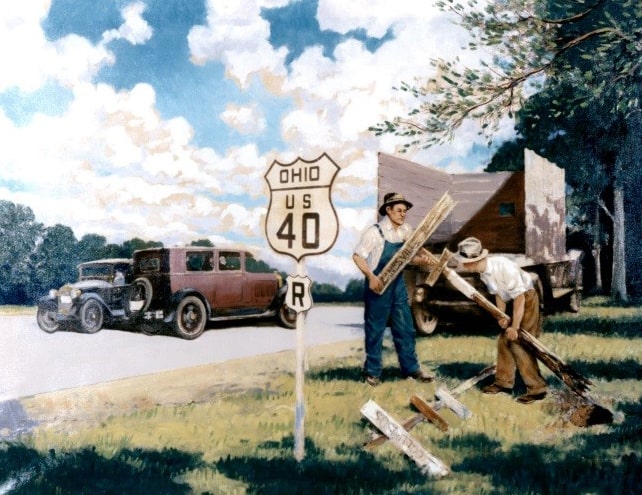
1926 – Establishment of the U.S. Numbered Highway System
In 1926, after a proposal from the Joint Board on Interstate Highways, AASHO approved the U.S. numbered highway system and the iconic U.S. shield signs. This followed a collaborative effort involving state highway agencies and federal officials, aimed at creating uniform road markings and signage, including stop and yield signs, across the nation. The implementation of this system was voluntary and managed by state highway agencies
By the late 1920s, long-haul trucking began to emerge as a viable alternative to rail transport, especially for high-value goods and perishables, due to its speed and flexibility.
The stock market crash of 1929 and the subsequent Great Depression had a significant impact on the trucking industry, as it did on all sectors of the economy.
Despite the economic downturn, trucking remained a vital part of the logistics and transportation infrastructure.
1930s – Great Depression Impact
The Great Depression of the 1930s forced many trucking companies out of business, but those that survived benefited from the slowly reviving economy. This era also saw many entrepreneurs entering the trucking industry, taking advantage of the opportunities it presented. The trucking industry in the United States underwent significant developments from 1930 to 1940.
Here’s an overview of the key events during this period:
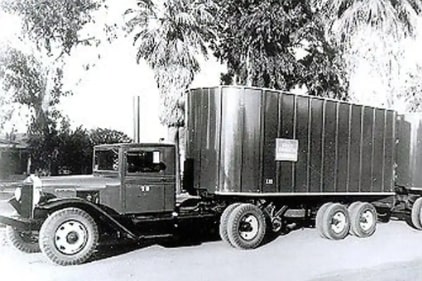
1933 – America’s First Production Diesel Truck with a Vertical Exhaust Stack
In 1933, Kenworth, collaborating with Cummins, produced the first American standard production diesel truck, introducing innovations like the vertical exhaust stack. This event marked the beginning of the modern diesel-powered truck era in the United States. Diesel engines would eventually become the standard in the trucking industry due to their efficiency and durability.
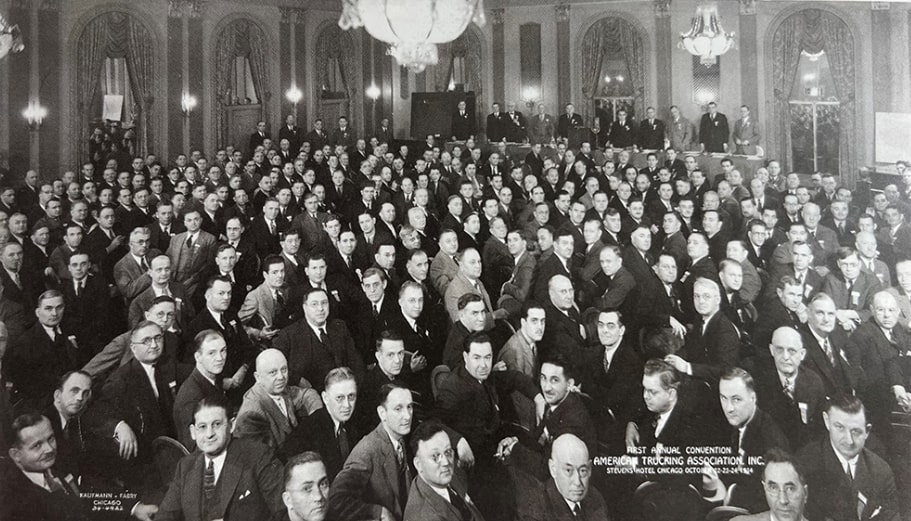
1933 – Formation of the American Trucking Associations
Two major organizations, the American Highway Freight Association and the Federation Trucks Associations of America, merged to form the American Trucking Association (ATA). This organization continues to represent the interests of the trucking industry.
The image left represents the first ATA annual convention in Chicago, in 1934.
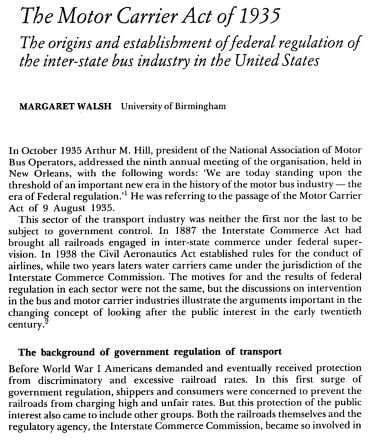
1935 – Motor Carrier Act
This act marked the beginning of federal regulation in the trucking industry. It authorized the Interstate Commerce Commission (ICC) to regulate interstate trucking, controlling aspects like rates and operating territories.
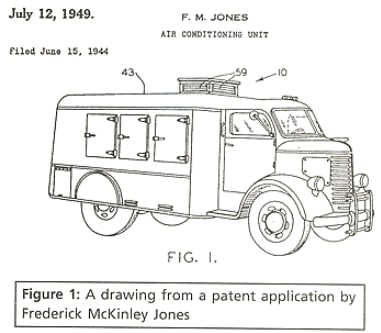
1935 – First Refrigeration system
In 1935, Frederick McKinley Jones developed the first automatic refrigeration system for long-haul trucks, a groundbreaking invention that was initially installed under the truck but later moved to the top due to road dirt clogging. Jones received a patent for this refrigeration system in 1940.
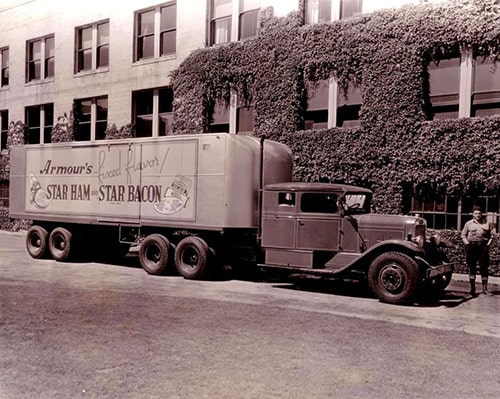
1937 – First HOS rules
In 1937, the U.S. introduced its first Hours of Service (HOS) rules, allowing 10 hours of driving, 8 hours off-duty, and a 60/70-hour limit over 7/8 days, with split sleeper berth periods.

1938 – Truckers Strike in New York City
One of the largest strikes of the year occurred in September 1938 when truckers in New York City demanded a standard 40-hour week, alongside advocating for increased wages per hour. This strike significantly impacted the city, showcasing the growing influence and essential nature of the trucking industry.
1940s – World War II
During World War II, the trucking industry played a crucial role. By 1942, there were 125,000 truckers enlisted in all branches, supporting the war effort by transporting materials.
This period saw advancements in truck technology and the expansion of the trucking industry as trucks filled the transportation gap left by the limitations of the rail system during the war.
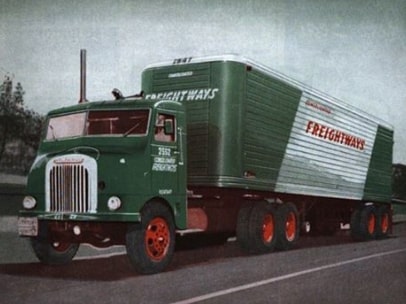
1942 – The first all-aluminum cab
In 1942, Freightliner revolutionized the industry with the Model 600, the first commercial vehicle to feature an all-aluminum cab, which was lighter than steel and helped reduce fuel emissions.
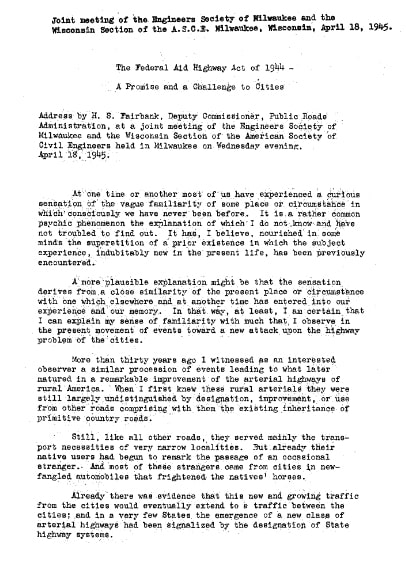
1944 – Federal-Aid Highway Act
This act authorized the designation of Interstate Highways, although it didn’t include a funding program and the project was largely stalled until the mid-1950s.
Post-War Expansion
After the war, the American economy and wealth grew, leading to increased demand for the transportation of goods across the country. This boom in demand led to further growth and expansion of the trucking industry.
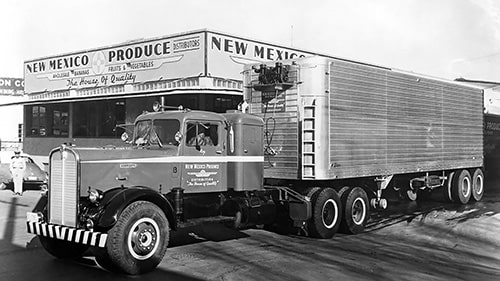
1950s – Interstate Highway System
The trucking industry in the United States underwent significant developments between 1950 and 1960.
During this period, trucking continued to establish itself as a vital part of the American economy. The widespread construction of Interstate Highways increased the number of trucks used for transportation.
The trucking industry carried a significant portion of trade goods across the United States, demonstrating its critical role in the national economy.
What’s interesting, it’s the period when trucking started to gain cultural prominence, setting the stage for its significant role in the American lifestyle in the subsequent decades.
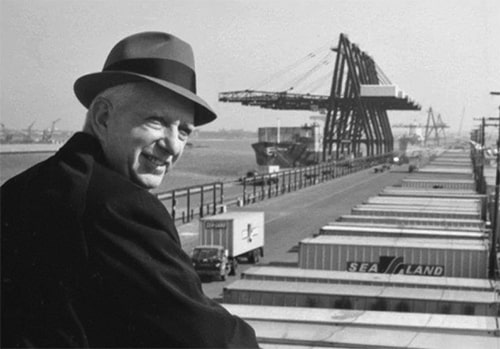
1955 – Containerized Intermodal Shipping
In 1955, Malcolm McLean, an American entrepreneur in the trucking industry, invented standardized shipping containers. This innovation streamlined the transfer of goods across ships, trucks, and trains, reducing manual labor. He later founded Sea-Land, a container shipping company.
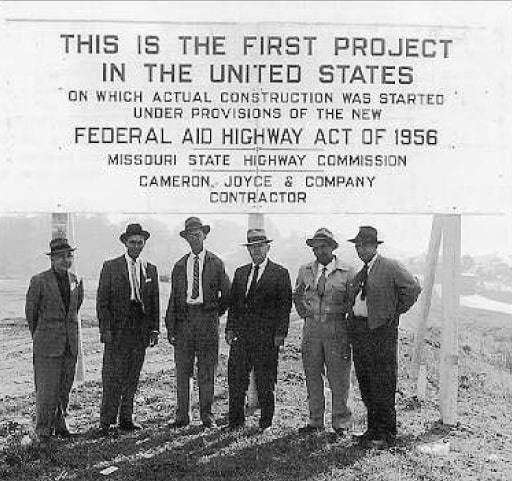
1956 – Federal-Aid Highway Act
This act, signed into law by President Dwight Eisenhower, authorized the construction of the Interstate Highway System, allowing larger trucks to travel at higher speeds through rural and urban areas. The act also set the first federal maximum gross vehicle weight limit for trucks at 73,280 pounds. This development was crucial in linking major cities across the continent and significantly boosted the efficiency and scope of the trucking industry.
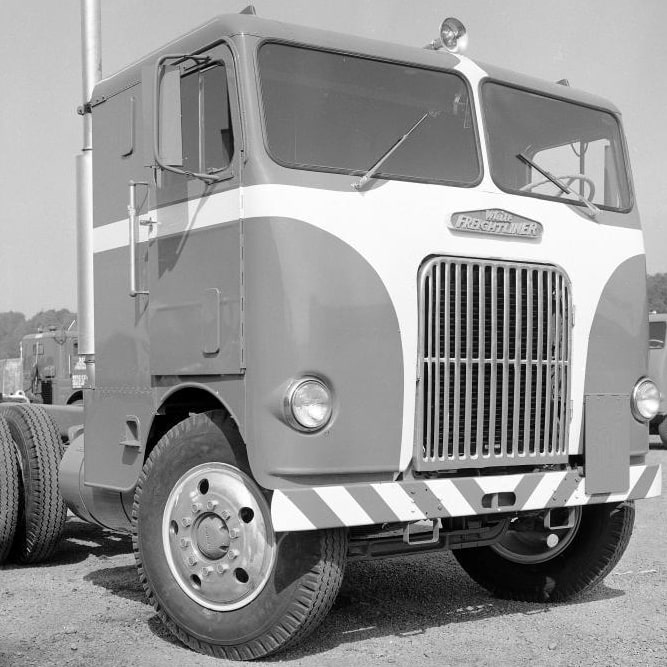
1958 – Freightliner Presented Cab-Over Design
The COE truck, also known as cab forward, was introduced.
White-Freightliner introduced a revolutionary tilting cab-over design, which was updated to tilt forward 90 degrees for enhanced engine access.
1960s – Shifts and growth
The 1960s marked a significant period of transformation and growth in the trucking industry in the United States, driven by technological advancements, cultural shifts, and regulatory changes.
More powerful engines, power steering, individual front suspension, and variable rear suspension were introduced, enhancing the handling of heavy tractor-trailers. Innovations like the “Jake Brake” engine brake system, air conditioning, and tinted windows also emerged during this time, contributing to better driving conditions and efficiency.
The trucking industry in the 60s also faced challenges such as the lack of well-maintained highways suitable for heavy truck traffic, leading to increased wear and tear on vehicles. This situation improved with the ongoing construction of the Interstate Highway System, initiated in the 50s, which provided faster and safer routes for transportation.
There was also a shortage of truck drivers due to the demanding nature of the job, leading to high turnover rates and labor shortages.
Shift to More Comfortable Trucks
The standard cab-over-engine (COE) truck models, which had the cab positioned directly over the engine, started to be replaced by conventional trucks with longer hoods and more spacious cabs. These new designs offered more comfort and space for drivers, reflecting an industry response to the driver shortage problem.
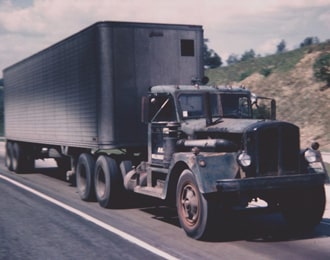
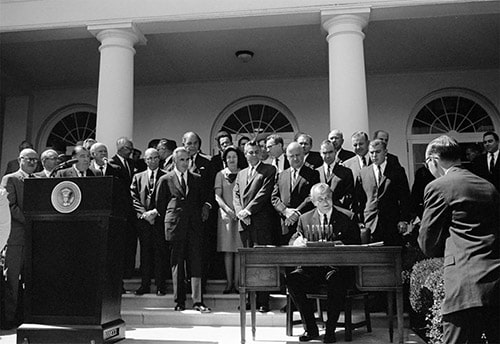
1966 – National Traffic and Motor Vehicle Safety Act
The National Traffic and Motor Vehicle Safety Act of 1966 established safety standards for trucks, and the Motor Carrier Act of 1965 laid down rules for trucking companies, including mandatory safety inspections and minimum insurance requirements.
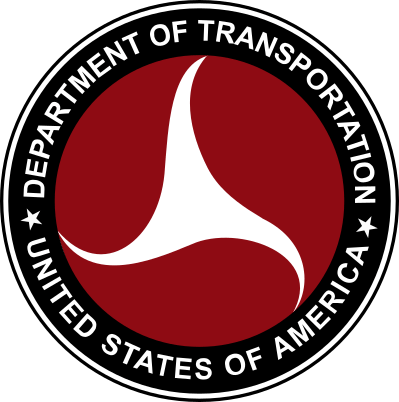
1967 – Creation of the Department of Transportation
The establishment of the Department of Transportation (DOT) in 1967 was a direct response to the growing needs of the trucking industry and the infrastructure that supported it, especially following the development of the Interstate Highway System.
Cultural Representation
Trucking was prominently featured in popular culture during this era.
For instance, the song “Six Days on the Road” by Dave Dudley depicted truckers as tough and enduring, contributing to the romanticized image of truck drivers.

1970s – Trucking’s Golden Era
The 1970s were marked by the rise in popularity of “trucker culture,” with truck drivers romanticized as modern-day cowboys and outlaws in movies and trucker songs. The use of CB radios, along with trucker hats and CB slang, became popular among the general public, reflecting the cultural impact of trucking during this period.
Diesel prices jumped after the Arab Oil Embargo.
It was a time of labor issues and Teamsters played a role. Labor disputes were common, including wildcat strikes and lockouts. Jimmy Hoffa, the president of the Teamsters, was a prominent figure during this time. The Teamsters faced various challenges, including legal troubles and misappropriation of funds allegations.
The decade set the stage for the modern era of trucking, with its increased competitiveness and significant role in the American economy.
Federal Safety and Environmental Regulations
The 1970s saw new emissions regulations from the U.S. Environmental Protection Agency and many states. These regulations were challenging for the industry, with questions arising about how one truck could meet all the different regulations. The National Highway Traffic Safety Administration also faced issues when it tried to require trucks to have antilock brakes, a mandate that was ultimately struck down by the Supreme Court in 1978.
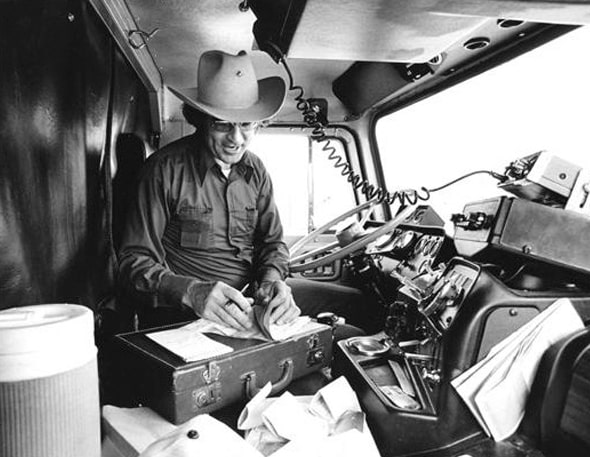
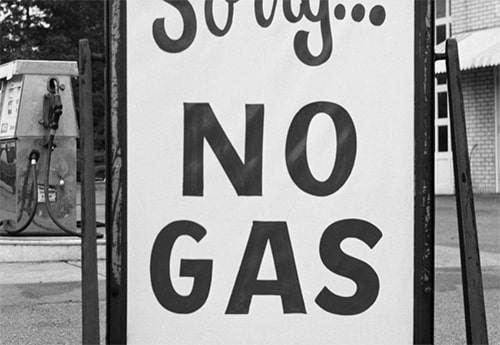
1973 – The Arab Oil Embargo
The Arab Oil Embargo in 1973 led to diesel prices jumping significantly, causing truckstops to limit sales and owner-operators to stage protests. This period also saw the formation of the Owner-Operator Independent Drivers Association (OOIDA) during the crisis.
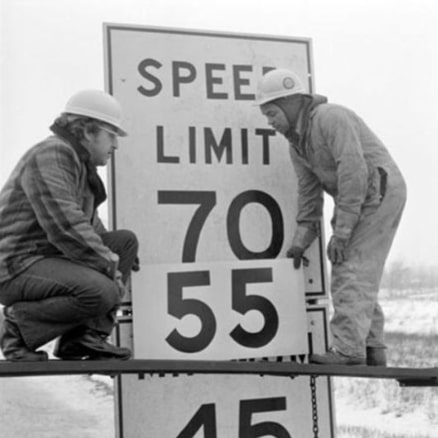
1974 – National Maximum Speed Limit
The National Maximum Speed Limit, set in 1974 due to the oil crisis, limited speeds to 55 mph, later raised to 65 mph in 1987. Intended to save fuel and increase safety, it faced compliance issues and was repealed in 1995, returning authority to states.
Popularity of CB radio
Commercial truckers heavily relied on CB radios during the oil crisis to locate fuel stations, avoid speed traps, and organize protests against the new speed limit and other trucking regulations.
CB radios became essential, especially for independent truckers whose pay was based on mileage, as the speed limit reduction significantly affected their productivity.

1980s – Deregulation Begins
The 80s marked the beginning of deregulation in the trucking industry.
The Motor Carrier Act of 1980 significantly reduced the ICC’s control, leading to increased competition and lower freight rates.
This period also saw the introduction of modern technologies in trucks, including computerized logistics and GPS tracking, which greatly improved efficiency and logistics management.

1980 – Deregulation of the Trucking Industry
The Motor Carrier Act of 1980 was a landmark event in the history of trucking and dramatically changed the industry by deregulating it. This act increased the number of trucking companies in operation and led to a decrease in unionization among truck drivers, resulting in lower overall pay.
However, deregulation also increased competition and productivity in the industry, benefiting American consumers by reducing costs.
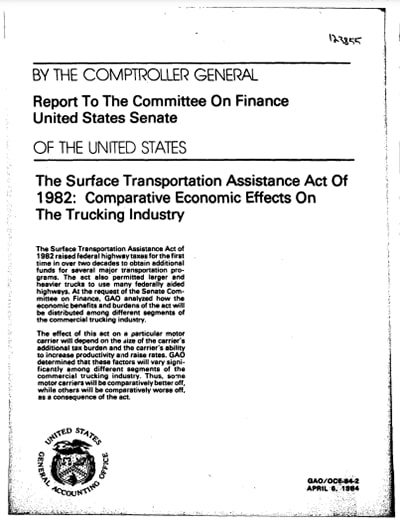
1982 – Surface Transportation Assistance Act
The Surface Transportation Assistance Act of 1982 established federal minimum weight limits for trucks, standardizing truck size and weight limits on Interstate Highways across the country. This legislation resolved the issue of “barrier states,” which had previously set their own weight limits.
1990s – Technological advancement and regulatory challenges
The developments in the 1990s reflect a period of significant transition in the trucking industry, with heightened regulatory scrutiny, technological advancements, and evolving operational practices.
This included the abolition of the Interstate Commerce Commission in 1996, transferring the remaining rules to a new Surface Transportation Board within the Department of Transportation.
The Congress, in 1999, passed a law creating a separate trucking safety administration due to concerns over the trucking industry’s safety standards.

1992 – Commercial Driver’s License Requirement
Starting April 1, 1992, all drivers of trucks over 26,000 pounds were required to have a Commercial Driver’s License (CDL). This regulation aimed to enhance safety but also faced challenges such as a shortage of testing facilities, leading to many truckers missing the deadline.

1995 – Repeal of the National Maximum Speed Limit
Congress repealed the national maximum 55-mph speed limit in 1995. This decision led to debates and studies about the impacts of speed on safety and efficiency in the trucking industry.
Advances in Communication and Equipment
The decade also witnessed significant advances in communication technology and trucking equipment.
Cell phones became more affordable, and satellite-based tracking and communication systems like Qualcomm’s Omnitracs were introduced. These technologies greatly improved fleet management and driver communication.
The appearance of the Internet in he 90s dramatically impacted the trucking industry.

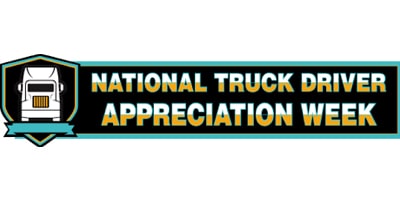
1998 – First National Truck Driver Appreciation Week
Since its inception in 1998, National Truck Driver Appreciation Week, held annually in mid-September, acknowledges the vital role of truckers in the economy and our daily lives, serving as a reminder to show gratitude for their safe and essential work.

1998 – Antilock Brakes Requirement
The introduction of antilock brakes for all new air-braked trucks and trailers marked another significant advancement in trucking equipment.
By 1998, all new air-braked trucks and trailers were required to have antilock brakes, a significant safety advancement since the “121” debacle of the 1970s.
2000s – Ongoing Innovations
The trucking industry continues to evolve with technological advancements, including the exploration of autonomous trucking, electric trucks, and advanced fleet management systems.
Long-awaited reforms to truck driver hours-of-service rules were intended to go into effect in 2004. However, these reforms were challenged in court, leading to a series of rewrites and further challenges that extended into the next decade.
The 2000s were also marked by increasingly stringent engine emissions regulations. For example, in 2000, the Environmental Protection Agency (EPA) made efforts to declare diesel exhaust a cancer threat, leading to significant changes in diesel engine technology and emissions control.

2000 – Creation of the Federal Motor Carrier Safety Administration
The FMCSA was officially established in January 2000. This agency played a vital role in increasing safety regulations throughout the decade, which culminated in the Compliance, Safety, Accountability program, initially known as Comprehensive Safety Analysis (CSA) 2010.

2008 – Fuel Price Volatility
In 2008, diesel prices spiked to over $5 per gallon in some areas, leading HDT to devote an entire issue to “Fuel Crisis Survival”.
2010s – Industry diversification and technological advancements in the trucking industry
This decade saw trucking companies diversifying their services, blurring the lines between traditional segments like truckload, less-than-truckload, intermodal, freight brokers, and third-party logistics companies.
The role of 3PLs (third-party logistics) notably changed, and by 2019, opportunities in last-mile delivery and logistics connections became prominent.
The decade was also notable for significant technological advancements, including the adoption of electronic logging devices (ELDs) and telematics, delivering a wealth of information from truck to back office.
There was also a focus on safety technologies like collision avoidance systems, cameras, and analytics. Computing in the cloud, blockchain, and smart trailers became emerging topics towards the end of the decade.

2010 – Regulatory Changes and Compliance
The introduction of the Compliance, Safety, Accountability (CSA) program in 2010 marked a fundamental change in safety compliance. This period also saw ongoing tweaks and challenges to the CSA program. Additionally, the trucking industry faced a reevaluation of hours of service regulations due to recurring court challenges by safety groups.

2017 – ELD Become Mandatory
The ELD mandate, initiated through the MAP-21 Act of 2012 and officially announced by the FMCSA in 2015, required applicable carriers to adopt Electronic Logging Devices (ELDs) by December 2017. Carriers using approved AOBRDs at the mandate’s announcement were given until December 2019 to transition to ELDs.
Clean and Green Initiatives
The industry saw increasing exploration of alternative fuels like natural gas and biodiesel blends, with debates over compressed natural gas vs. liquefied natural gas. EPA fuel-efficiency regulations for trucks came into effect for the 2014 model year, pushing for sustainability and fuel efficiency. Electric vehicle (EV) technology also began to gain traction, with the commercial EV market slowly evolving throughout the decade.
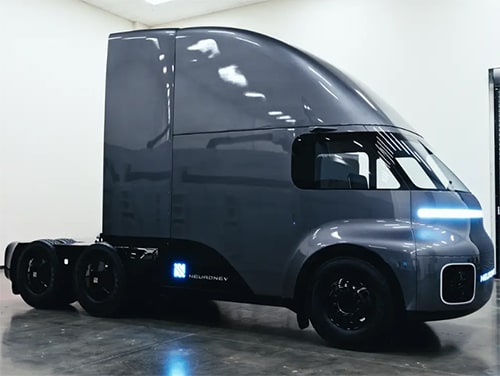
2020s – Continued Technological Growth and Challenges
The focus on technology continued to grow, with further advancements in ELDs, safety technologies, and the gradual adoption of EVs. The trucking industry also faced new challenges related to global economic changes, fluctuating fuel prices, and ongoing driver shortages.

2020 – Impact of COVID-19 Pandemic
The COVID-19 pandemic brought unprecedented challenges to the trucking industry, impacting supply chains, altering shipping and delivery patterns, and necessitating new safety and operational protocols.
Advancements in Autonomous Trucking
The industry also saw developments in autonomous trucking technologies, though widespread adoption and regulatory frameworks were still evolving.
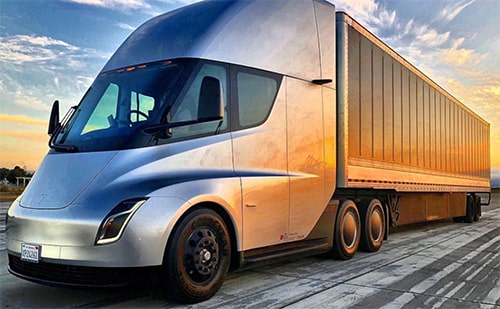
Environmental and Sustainability Focus
There was an increased emphasis on reducing carbon emissions and exploring sustainable and green technologies in trucking, aligning with global environmental goals.

Wrapping-up
The history of trucking in the United States is a story of innovation, adaptation, and significant impact. It reflects not just the evolution of a crucial industry but also the broader economic, technological, and cultural trends of the nation. Beginning with the early innovations of the Winton Motor Carriage Company and the significant advancements by August Charles Fruehauf, the trucking industry has been instrumental in shaping American commerce and infrastructure.
As trucking continues to adapt to new technologies and regulations, its role as a lifeline of the American economy and a key player in global logistics is likely to remain undiminished.

